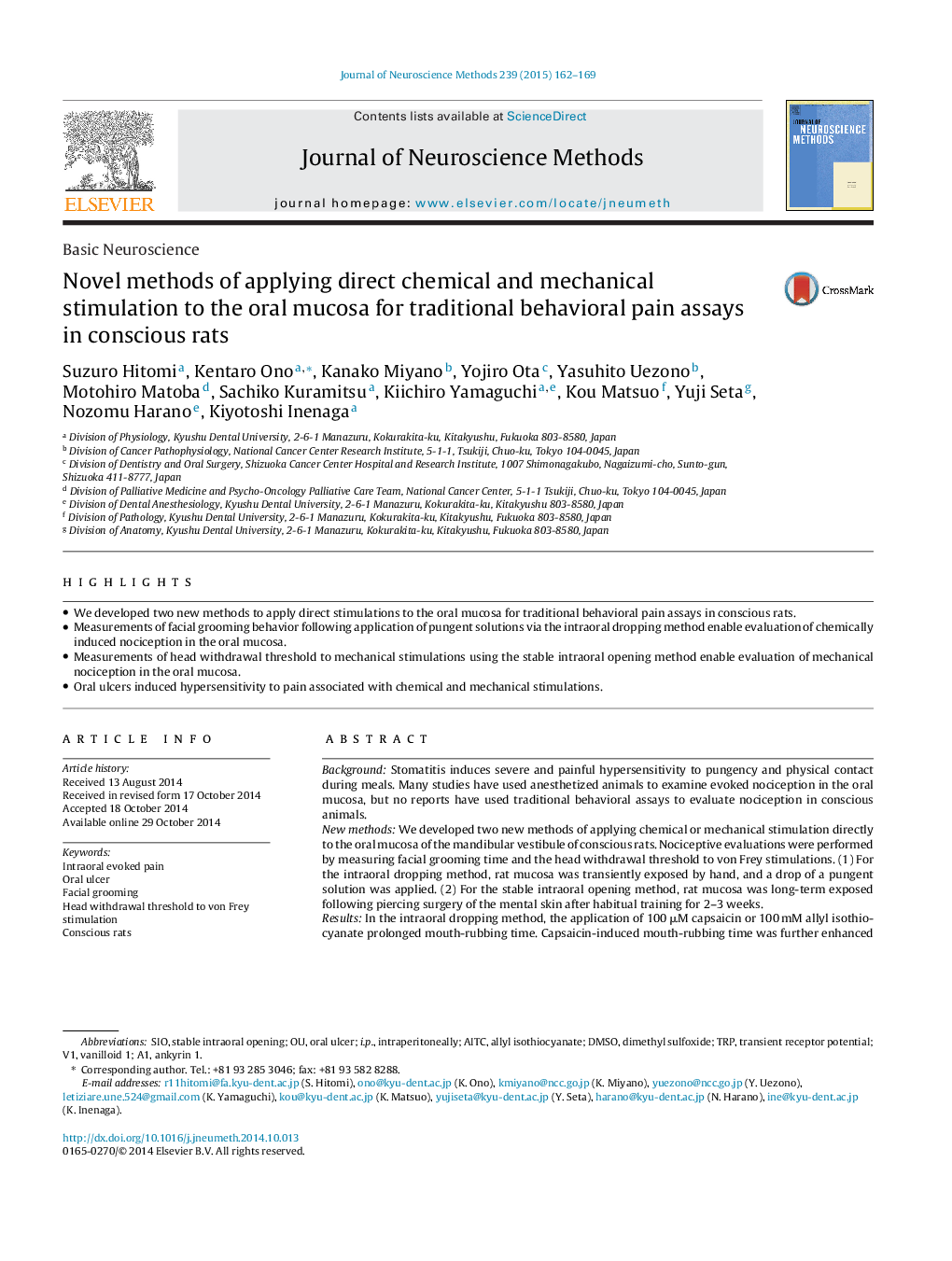| Article ID | Journal | Published Year | Pages | File Type |
|---|---|---|---|---|
| 6268547 | Journal of Neuroscience Methods | 2015 | 8 Pages |
â¢We developed two new methods to apply direct stimulations to the oral mucosa for traditional behavioral pain assays in conscious rats.â¢Measurements of facial grooming behavior following application of pungent solutions via the intraoral dropping method enable evaluation of chemically induced nociception in the oral mucosa.â¢Measurements of head withdrawal threshold to mechanical stimulations using the stable intraoral opening method enable evaluation of mechanical nociception in the oral mucosa.â¢Oral ulcers induced hypersensitivity to pain associated with chemical and mechanical stimulations.
BackgroundStomatitis induces severe and painful hypersensitivity to pungency and physical contact during meals. Many studies have used anesthetized animals to examine evoked nociception in the oral mucosa, but no reports have used traditional behavioral assays to evaluate nociception in conscious animals.New methodsWe developed two new methods of applying chemical or mechanical stimulation directly to the oral mucosa of the mandibular vestibule of conscious rats. Nociceptive evaluations were performed by measuring facial grooming time and the head withdrawal threshold to von Frey stimulations. (1) For the intraoral dropping method, rat mucosa was transiently exposed by hand, and a drop of a pungent solution was applied. (2) For the stable intraoral opening method, rat mucosa was long-term exposed following piercing surgery of the mental skin after habitual training for 2-3 weeks.ResultsIn the intraoral dropping method, the application of 100 μM capsaicin or 100 mM allyl isothiocyanate prolonged mouth-rubbing time. Capsaicin-induced mouth-rubbing time was further enhanced following the development of an acetic acid-induced ulcer. The stable intraoral opening method enabled stable measurements of the mechanical withdrawal threshold in the oral mucosa of conscious rats. Ulcer development decreased the mechanical threshold, whereas topical lidocaine treatment increased the threshold.Comparison with existing methodsThese new methods enable the evaluations of motivational nocifensive behaviors in response to intraoral stimulations without any anesthetic effects.ConclusionsThe intraoral dropping and stable intraoral opening methods can be used in combination with traditional behavioral assays to evaluate nociception in the oral mucosa of conscious rats.
